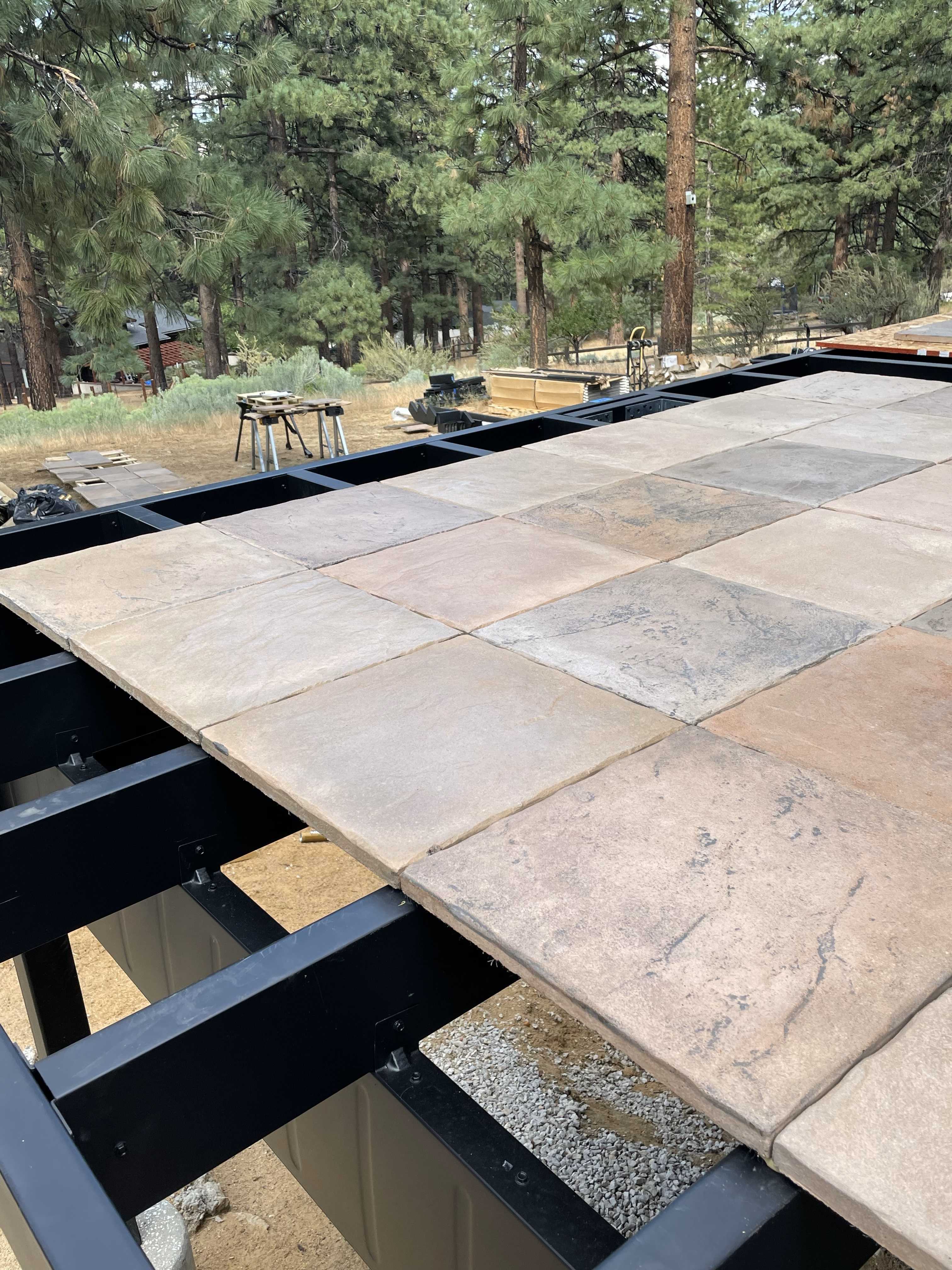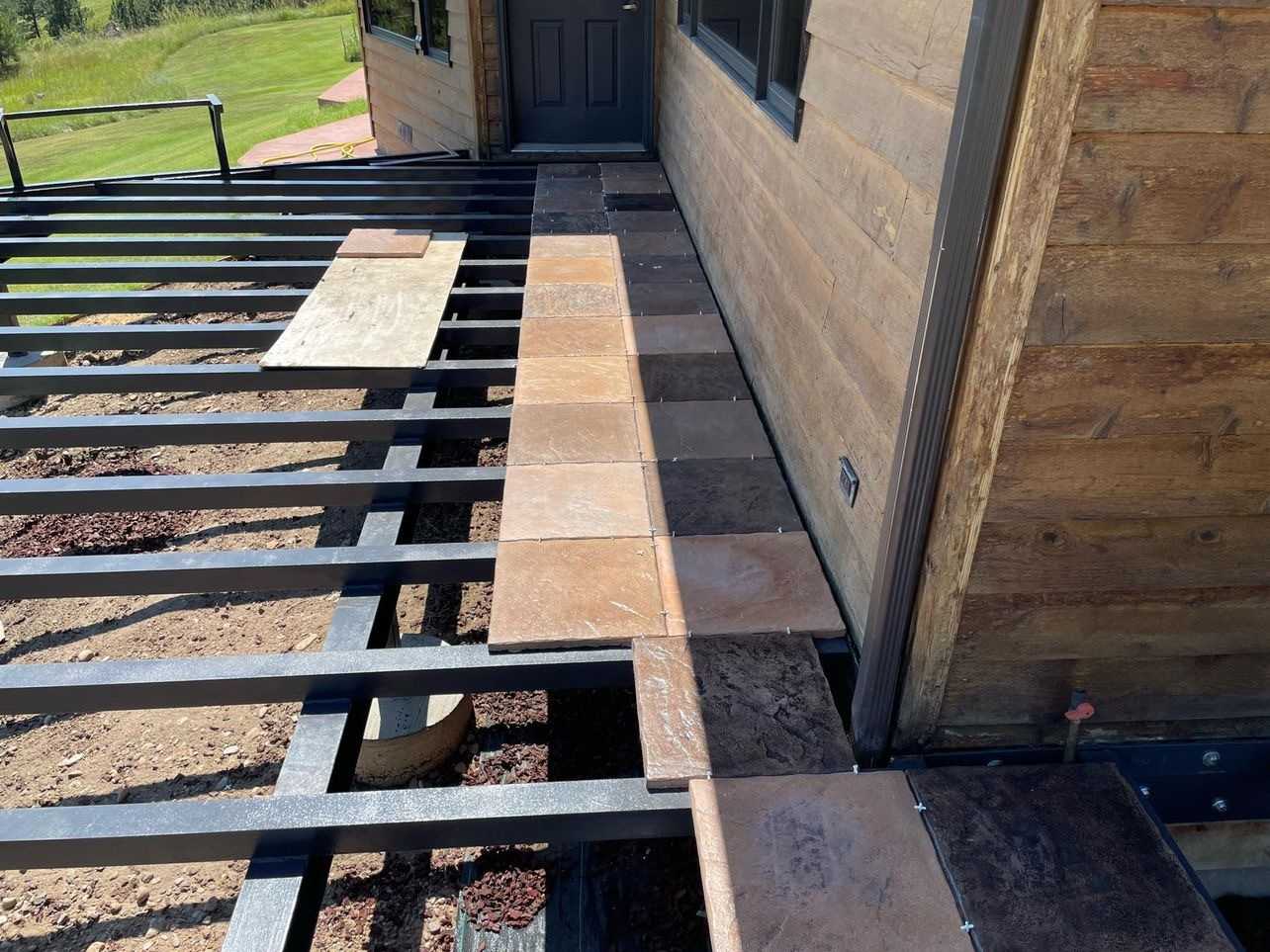
Steel Or Aluminum Framing Install Method
Building a Completely Non-Combustible (Fire-Safe) Deck
For those looking for a lifelong deck, DekTek Tile’s concrete decking & steel framing is an excellent solution. Whether it be to eliminate worry about wood rot and to build an overall more solid structure, or for those looking for a fireproof deck, steel framing can be a great option. Some insurance companies are now requiring homeowners to have non-combustible outdoor decks and exteriors. Insurance companies who don’t require it quite yet may be moving towards this direction in the future. With DekTek Tile’s non-combustible concrete deck tiles, combined with steel deck framing, it’s the perfect solution to help make your home more fire-safe and may even lower homeowners’ insurance in some states.
DekTek Tile’s Concrete Decking & Fortress Evolution Steel Framing
Fortress Evolution steel deck framing is one popular brand that the DekTek concrete deck tiles can easily be installed on. Fortress steel joists are 2” wide, which is the minimum flange size required with our tiles. Fortress steel deck framing can be ordered with the plates precut for 16” o.c. joist placement, which will work fine for DekTek Tile to be installed with 1/16” tile joint (gap between the tile for water drainage). For joint spacing 1/8” or larger, it will require Fortress Evolution’s S-Plates steel framing, which allows you to customize the joist frame placement, so you can install the joists at 16 1/16” o.c. By installing the Fortress Evolution steel framing 16 1/16” o.c., this will create a tile joint gap of 1/8”.

Fortress Evolution Steel Deck Framing Pros & Cons:
Pros: Fortress Evolution steel framing can last as much as 4x’s longer than wood deck framing. Another huge PRO is Fortress provides all the engineering documentation needed to meet building codes and for local permitting. They also pre-cut the steel for easy installation. Another pro is that Fortress Evolution comes pre-colored in a nice black finish.
CONs: The upfront cost of Fortress Evolution is more expensive than traditional wood deck framing. It’s also more expensive than if you were to fabricate your own steel framing. Installing Fortress Evolution can also be more labor intensive than wood deck framing.
Custom Built Steel Deck Frames
Another steel framing option, versus going with a steel deck framing system that is already put together, is using painted steel or galvanized steel. This can be used for building your own custom steel deck frame, which would require welding or erecting the steel frame with brackets & bolts. This method takes a little more time & skill.

PRO: Fabricating your own steel framed deck is more cost effective than Fortress Evolution steel deck framing. Another big advantage to customized steel deck framing is that you can order wider flange sizes (this is the top of the joist where the tile rests), which gives the tile better support.
CON: When fabricating your own steel deck frame, the steel does not come pre-cut like Fortress Evolution, and would need to be erected and either welded or fastened. Another con is this option requires a higher level of skill and specific steel framing tools for installation.
One of the biggest cons is that the engineering is not already completed for you, like Fortress steel framing. You may be required to supply engineering documentation to get your local permit or inspector, which could potentially require you to hire your own engineer.
Whichever your preference is, whether you build a prefabricated steel deck, or if you fabricate it yourself, it’s important to know that the tiles still need to be locked in with a mechanically fastened border on the outside perimeter of the deck. The most common option is an anodized aluminum or metal edge trim angle (this is preferred for those wanting a fire-safe, fully non-combustible deck). The other option is to border the concrete deck tiles with a row of composite/wood decking at the perimeter of the deck to lock tiles in. Lastly, DekTek Tiles will get glued down to the steel joists the same as wood decks with a polyurethane construction adhesive.
The recommended joist flange size is 2 ½ to 3 inches wide. The minimum joists flange size is 2 inches, which will support two tiles with a bearing of 1 inch for each tile. Anything over 3 inches is not recommended.
An edge trim of composite decking, wood decking, or steel or aluminum angle must be used around perimeter of deck to lock in the tiles.
The deck tiles can be glued down to the steel joists with the same adhesive that is used for gluing it to wood joists, see DekTek’s Adhesive Brochure. The best way to install the tiles over steel joists is by using the 1/4-inch tile tab method. You first apply the glue in 4 to 5 dabs on the two joists where the tiles will be sitting. Make sure the dabs are tall enough to hold the 1/8-inch gap that the plastic tile tabs create. Then set the white plastic tile spacers in the four dabs of glue under each corner of where the tile will go. The purpose of the 1/4-inch tile tabs is to help hold the tile 1/8 inch above the joist flange and create an air space to breathe and allow for better water drainage.
For installations questions please feel free to call us at 218-380-9330.
